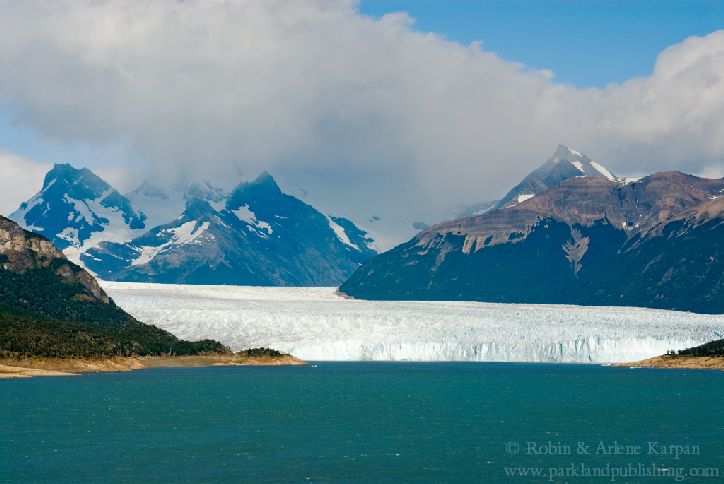

A three-hour flight from Buenos Aires brings us to El Calafate, a rapidly growing tourist town in the southwest corner of Argentina. Its prime location makes it a popular jumping-off point to explore southern Patagonia, with one of the world’s most famous glaciers less than a two-hour drive away.
Driving west of town, we follow the shore of Lago Argentino, its waters a brilliant turquoise blue from melted glacial ice. Heading into the mountains, we enter Los Glaciares National Park, recognized as a UNESCO World Heritage Site. We know that we’re getting close to Perito Moreno Glacier, but when we round a corner and see it for the first time, it still takes us by surprise.
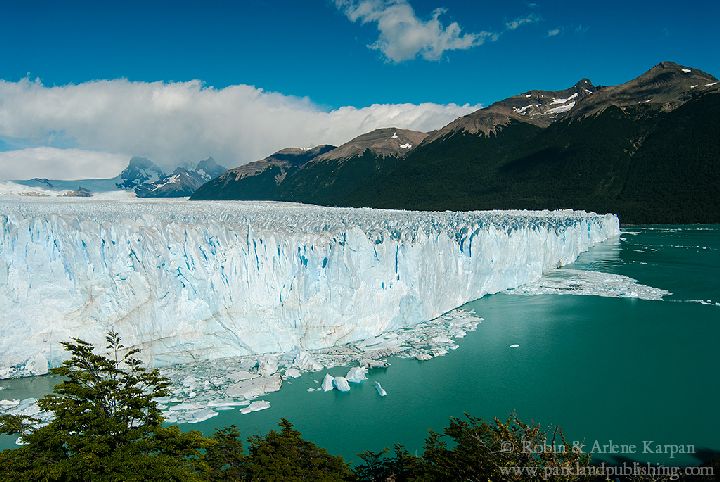
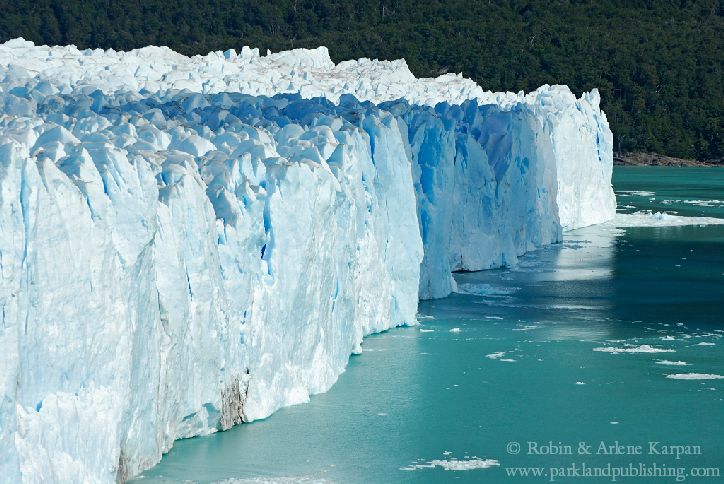 Everything about it is on a colossal scale, covering 250 square kilometres, 30 kilometres long, and with a five-kilometre-wide terminus. One of 47 major glaciers extending down from the largest ice cap in the world outside the polar regions, Perito Moreno isn’t even the biggest one. What makes it special is the unparalleled setting and easy access. We can walk almost right up to it. Paths and boardwalks provide a variety of spectacular views and vantage points for photography. Another highlight is taking a boat trip on the lake where we approach the glacier’s leading edge and stare up at the imposing 70-metre-high wall of fractured ice.
Everything about it is on a colossal scale, covering 250 square kilometres, 30 kilometres long, and with a five-kilometre-wide terminus. One of 47 major glaciers extending down from the largest ice cap in the world outside the polar regions, Perito Moreno isn’t even the biggest one. What makes it special is the unparalleled setting and easy access. We can walk almost right up to it. Paths and boardwalks provide a variety of spectacular views and vantage points for photography. Another highlight is taking a boat trip on the lake where we approach the glacier’s leading edge and stare up at the imposing 70-metre-high wall of fractured ice.
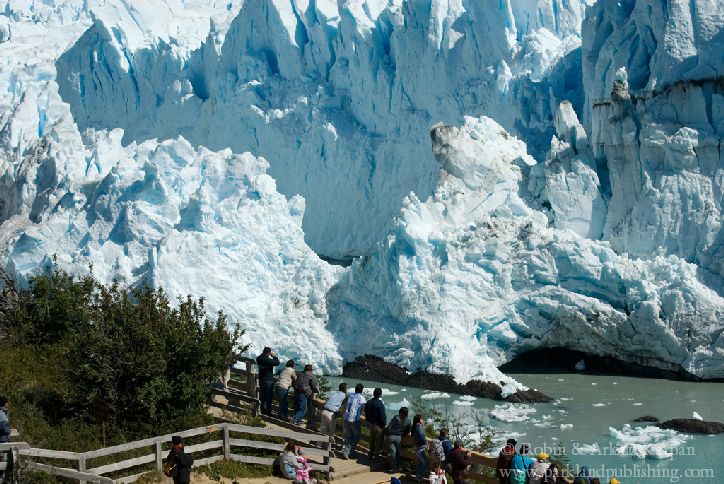
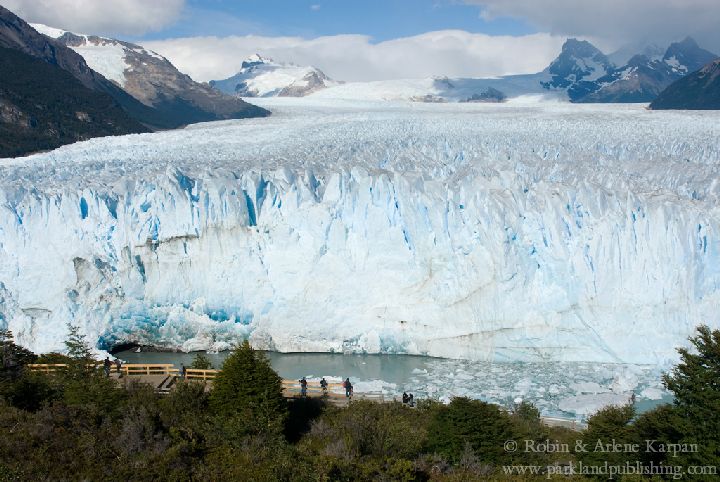
Perito Moreno is an exception to most of the world’s glaciers which are receding, many very quickly. Until the 1990s, Perito Moreno was described as one of few glaciers in the world that was still advancing. Today, it is often referred to as being “in equilibrium”; it advances about two metres per day, but loses its mass at about the same rate. We hear the expansive tongue of ice groaning and cracking as pieces of the face fall away, sending towering shafts of age-old ice crashing into Lago Argentino as the glacier “calves”. Every so often, enormous chunks break away in a thunderous roar, as icebergs collapse into the lake, creating powerful waves and sending spray skyward.
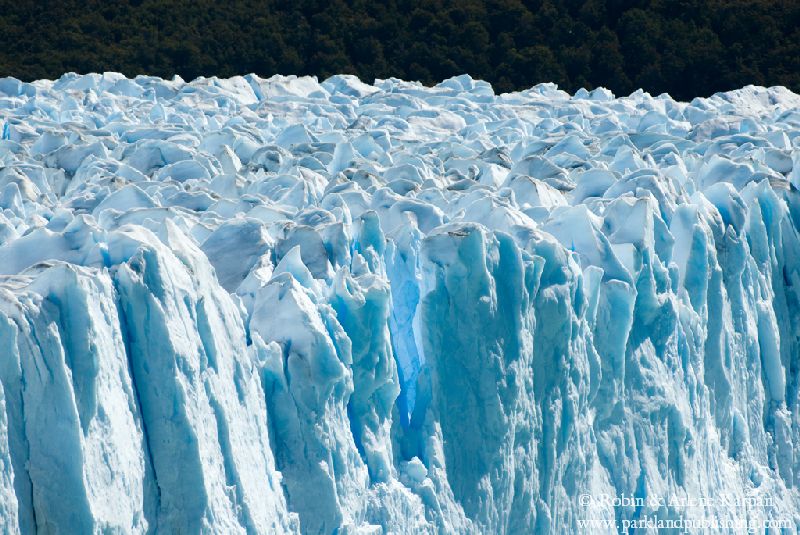
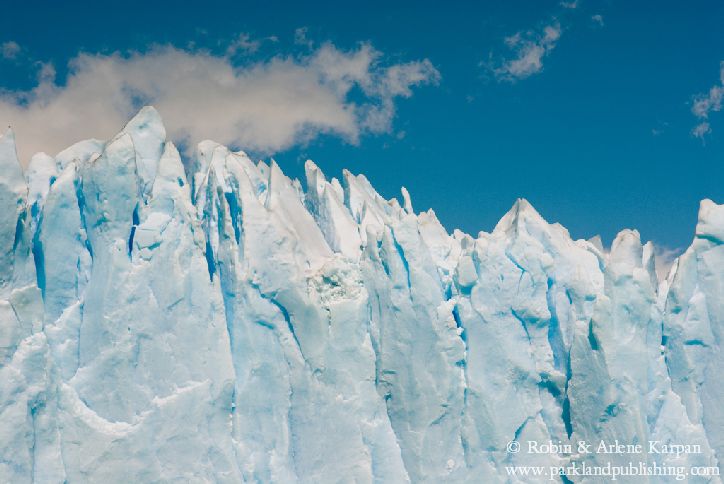
A range of lenses are useful here. Since you can walk almost right up to the glacier, a wide angle helps to capture the grandeur of the setting. Longer lenses help to isolate features such as the unreal blue shades in cracks in the ice, or chunks of ice splashing into the lake. The leading edge of the glacier calves frequently. Mostly it’s fairly small pieces that fall away, but if you’re patient and always have your camera ready, chances are reasonably good of capturing something more dramatic. The bright glare of the white ice makes a polarizing filter almost a necessity. It also helps to accentuate the brilliant blue hues in the ice and the turquoise waters.
It’s best to go to Perito Moreno as early as possible in the day, both for the quality light and because of the crowds. During our visit, it became significantly busier as the day went on.

